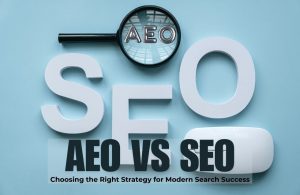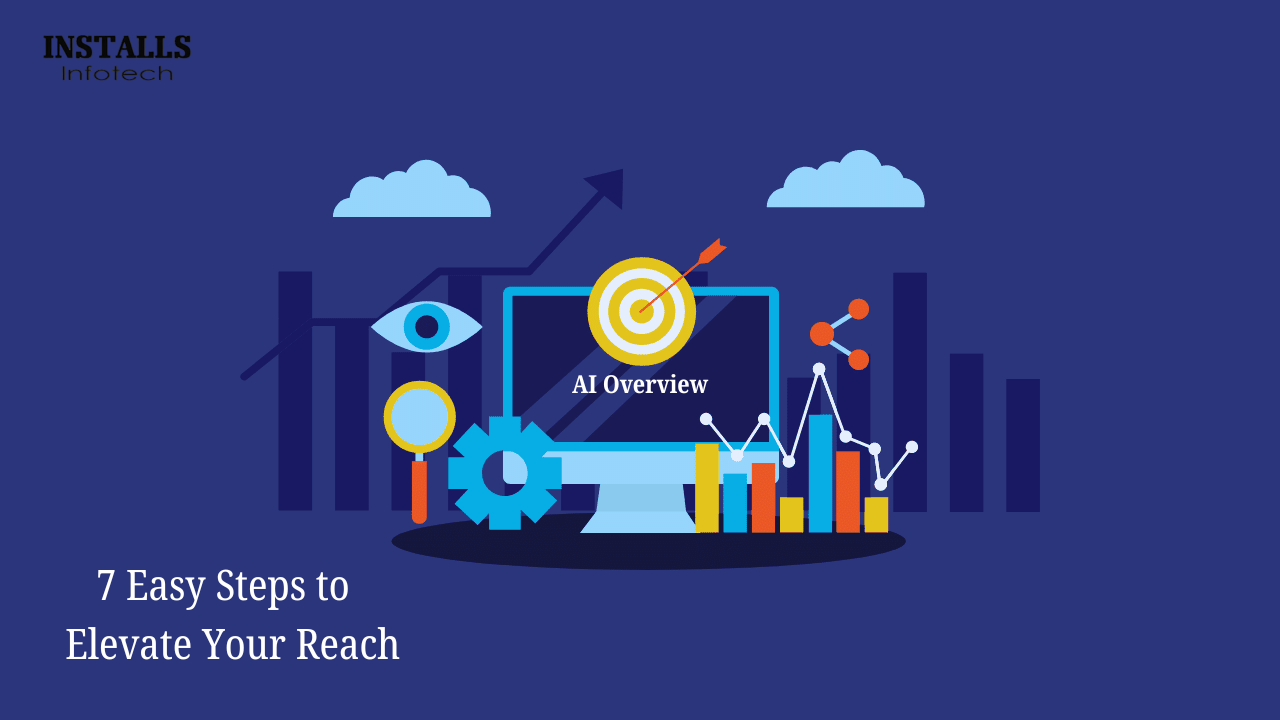Answer Engine Optimization (AEO) is the process of optimizing content to appear as direct answers in search engines, voice assistants (like Alexa, Siri, and Google Assistant), and AI-driven chatbots.
Unlike traditional SEO, which focuses on ranking for keywords, Answer Engine Optimization ensures that your content is structured in a way that search engines and AI tools can easily extract and present as an answer to a user’s question.
Types of Answer Engine
There are two primary categories of answer engines, each serving distinct purposes in how users interact with information:
- Voice search Engine
- Generative AI Bots
1. Voice Search Engines
Voice search engines are AI-powered systems designed to process spoken queries and provide relevant responses in a conversational manner. These engines rely on advanced speech recognition, natural language processing (NLP), and machine learning algorithms to interpret user intent and deliver accurate answers. They are commonly integrated into smart devices, mobile phones, and home automation systems, allowing hands-free access to information, task management, and device control.
Examples of Voice Search Engines:
- Google Assistant
- Amazon Alexa
- Apple Siri
2. Generative AI Bots
Generative AI bots are advanced AI-driven platforms that utilize deep learning models to generate human-like text responses based on user queries. These bots go beyond simple search results by analyzing vast amounts of data, synthesizing information, and generating well-structured, contextually relevant responses. Unlike voice search engines that primarily retrieve existing information, generative AI bots can create original content, provide in-depth explanations, and assist with complex problem-solving across various domains.
Examples of Generative AI Bots:
- Chat GPT
- Google Gemini
- Claude
- Meta AI
- Perplexity AI
What is the Differences Between SEO & AEO? 
Search Engine Optimization (SEO) and Answer Engine Optimization (AEO) both aim to enhance a website’s visibility and relevance in search results. However, they focus on different areas of the search experience. While SEO primarily drives traffic by improving rankings on search engine results pages (SERPs), AEO is designed to provide direct, concise answers to user queries. Understanding the distinction between these two strategies allows businesses to optimize their content effectively, catering to both traditional search algorithms and evolving user expectation.
| Feature | SEO (Search Engine Optimization) | AEO (Answer Engine Optimization) |
| Goal | Rank pages higher in search results | Provide direct answers to user queries |
| Focus | Keywords, backlinks, content depth | Structured content, concise answers |
| Search Intent | Broad (informational, navigational, transactional) | Primarily informational |
| Content Format | Long-form blogs, landing pages | FAQs, snippets, structured Q&A |
| Ranking Factor | Backlinks, on-page SEO, technical SEO | Schema markup, structured data, clarity |
| Platforms | Google, Bing, Yahoo | Voice search, AI assistants, featured snippets |
Key Components of Answer Engine Optimization
To optimize your website for Answer Engine Optimization, it is important to understand its key components.
1. User intent
User intent, also known as search intent, refers to the primary goal behind a user’s search query. Understanding this intent is crucial for delivering relevant and valuable content.
There are four main types of search intent:
- Informational: The user seeks knowledge on a specific topic, aiming to learn something.
- Transactional: The user intends to make a purchase.
- Navigational: The user is looking for a particular website or webpage.
- Commercial: The user is researching products or services before making a buying decision.
To create content that aligns with user intent, it’s essential to analyze search queries effectively. Tools like Google Keyword Planner and Ubersuggest can help identify the intent behind specific keywords.
Once you understand which search terms your website ranks for, you can conduct deeper research to explore related keywords, frequently asked questions, and trending topics. This approach helps optimize content for better engagement and conversion.
2. Targeting Long-Tail Keywords and Question-Based Queries
Long-tail keywords are more specific and reflect the way users naturally phrase search queries. Optimizing content to match these question-based searches increases the likelihood of appearing in search results tailored to user needs.
For example, instead of targeting a broad term like “SEO optimization,” content should focus on specific, query-based searches like:
- How to optimize my website for Google’s featured snippets?
- Why is Answer Engine Optimization important?
- What’s the difference between AEO and traditional SEO?
By answering these types of queries in a structured and detailed manner, websites improve their visibility in AI-driven search results.
3.Creating High-Quality Content
Search engines prioritize authoritative and well-researched content. Instead of simply rehashing common information, websites should focus on creating in-depth, expert-backed content that provides real value.
This includes:
- Citing reputable sources and industry experts
- Including original research, case studies, or unique insights
- Structuring content in a way that’s easy to digest (using visuals, bullet points, and summaries)
High-quality content builds trust with users and improves a site’s overall credibility, increasing the likelihood of being featured in AI-driven search results.
4. Structured Data (Schema Markup)
Schema markup plays a crucial role in helping search engines understand content contextually. By implementing FAQ schema, How-To schema, and Article schema, websites increase their chances of appearing in enhanced search results.
For instance, an FAQ section can use JSON-LD schema to ensure Google recognizes question-and-answer formats. This improves visibility in search results, particularly in AI-driven search experiences. A well-optimized How-To schema can also result in step-by-step instructions being displayed directly in search results, making it easier for users to find actionable information.
5. Optimizing for Featured Snippets and the “People Also Ask” Section
Featured snippets are prime real estate in search results. To increase the chances of appearing in these snippets, content should be structured in a way that search engines can easily extract key information. This often involves using a combination of lists, tables, and concise paragraphs that answer questions directly.
Google’s “People Also Ask” (PAA) section presents related queries, and content should be designed to answer multiple related questions within a single page. Structuring content with clear subheadings (H2, H3) that match common queries helps search engines recognize valuable answers.
For example, if writing about AEO, a well-structured article might include:
A direct answer at the beginning
A step-by-step guide formatted as a numbered list
A summary table comparing AEO vs. SEO
FAQs addressing related subtopics
7 Steps To Boost Your Reach!
1. Increases Visibility in Search Results
Many search engines now prioritize direct answers in featured snippets, voice search results, and AI-generated responses. AEO ensures your content appears in these prime locations, giving your brand more exposure.
2. Enhances User Experience
People search online to find quick and accurate answers. AEO helps structure content to deliver clear, direct, and reliable responses, improving user satisfaction and engagement.
3. Boosts Website Traffic and Click-Through Rates (CTR)
Even when answers appear in search results, users often click the source link for more details. Well-optimized content can drive more visitors to your website by positioning your brand as a trusted authority.
4. Optimized for Voice Search
With the rise of voice assistants like Siri, Alexa, and Google Assistant, people increasingly ask questions in conversational language. AEO helps structure content to align with how people naturally speak and ask questions, making it more likely to be picked up in voice searches.
5. Supports AI and Chatbot Responses
AI-driven search engines and chatbots are becoming primary sources of information. AEO ensures your content is structured so that AI tools can retrieve and present it accurately, keeping your brand relevant in the evolving digital landscape.
6. Increases Brand Authority and Trust
If your website consistently provides high-quality answers that appear in search results, users will view your brand as a credible and authoritative source in your industry. This can lead to greater customer trust and loyalty.
7. Improves Local and Niche SEO Performance
For businesses targeting local or niche markets, AEO can help capture relevant queries by providing precise and location-specific answers. This is crucial for industries like real estate, health care, and e-commerce.
Frequently Asked Questions
How does AEO impact voice search?
Voice assistants like Siri, Alexa, and Google Assistant rely on direct answers rather than traditional search results. Optimizing content for AEO increases the likelihood of being the chosen response in voice search queries.
What role does structured data play in AEO?
Structured data (Schema markup) helps search engines understand content better, increasing the chances of appearing in rich results like featured snippets, knowledge graphs, and voice search answers.
Can AEO help with local SEO?
Yes, AEO is crucial for local SEO. Optimizing Google My Business listings, using local keywords, and ensuring structured data markup for locations can increase chances of appearing in local search queries and voice search results.
What are the biggest challenges in AEO?
- Keeping up with evolving search engine algorithms.
- Competing with AI-generated answers.
- Structuring content effectively for featured snippets.
- Maintaining high-quality, authoritative content that search engines trust.







